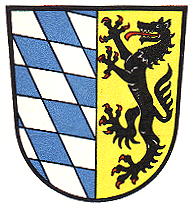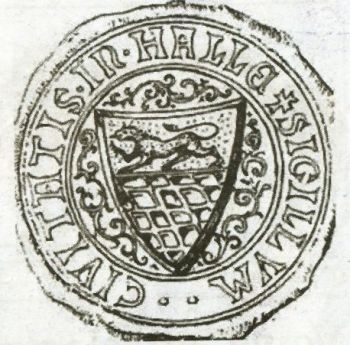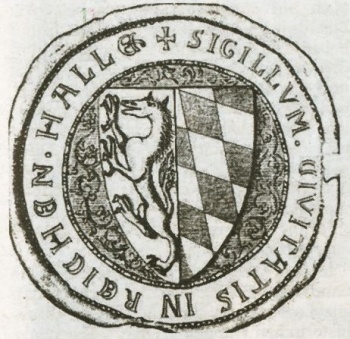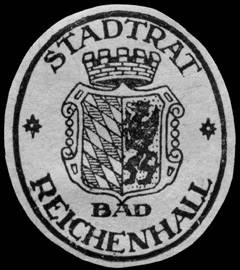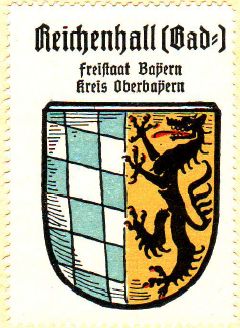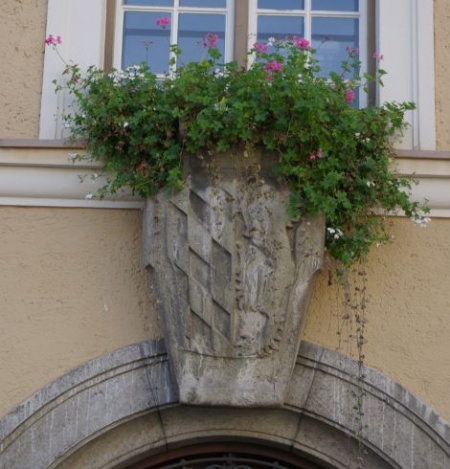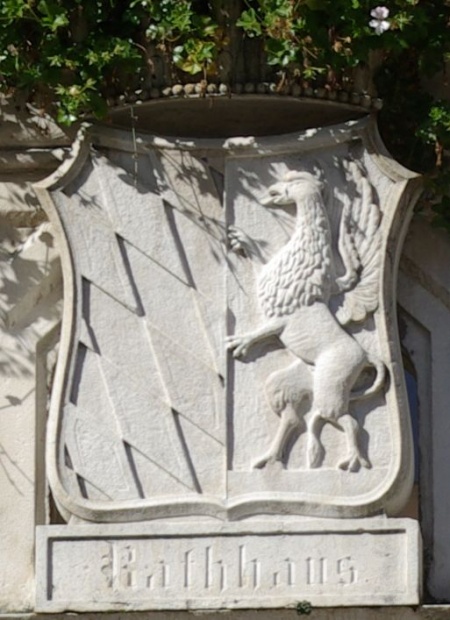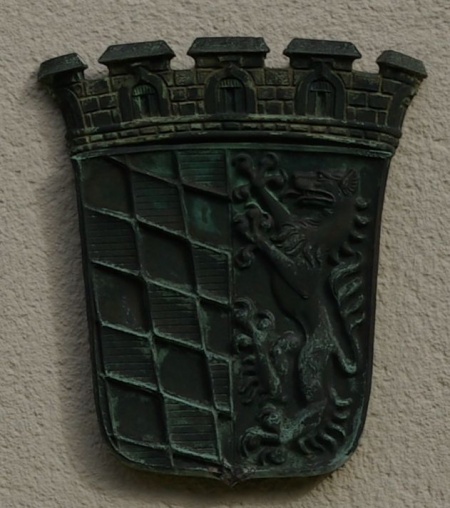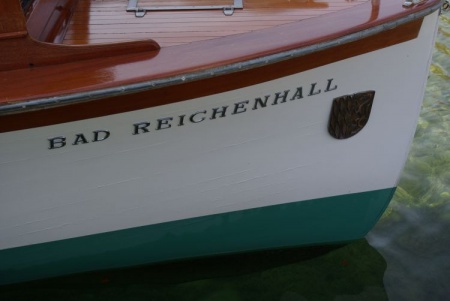Bad Reichenhall
| Heraldry of the World Civic heraldry of Germany - Deutsche Wappen (Gemeindewappen/Kreiswappen) |
BAD REICHENHALL
State : Bayern
District (Kreis) : Berchtesgadener Land (until 1973 a free urban district (Kreisfreie Stadt)
Additions : 1905 Sankt Zeno; 1978 Karlstein, Marzoll
Official blazon
Gespalten; vorne die bayerischen Rauten, hinten in Gold ein steigender, rot bewehrter schwarzer Panter.
Origin/meaning
Reichenhall received city rights in the middle of the 13th century. The oldest seal dates from 1279 and shows a Agnus Dei, the symbol of Saint John Baptist, the local patron saint. In 1301 a new seal appeared, showing the strong ties to Bayern. At the time the whole area, which was rich in salt, was disputed between the Dukes of Niederbayern and the Archsbishops of Salzburg. To add the panther and diamonds of the arms of Niederbayern in the city seal, was thus a clear pollitical symbol at the time.
The composition of the seal changed again in 1323 as the new seal showed the panther and diamonds now placed differently. Compare also Eggenfelden, Pfarrkirchen, Vilsbiburg and Vilshofen.
| Seal from 1279 |
Seal from 1301 |
| Seal from 1279 |
Seal from around 1900 |
The oldest coloured images of the arms date from the middle of the 16th century. At the time the panther had moved to the other half of the shield and the colour of the panther was black. The original colours of Niederbayern were a red panther in silver. It is not known whether the city ever used these colours, or that the colours were already black on gold prior to the 16th century.
Sometimes the arms were shown with a griffin instead of a panther. These arms most likely were used for the area around the city, which was sometimes referred to as the County Reichenhall. The Counts of Peilstein ruled this area and their arms also showed a panther (see Karlstein, but this panther was also often shown as a griffin (see Freystadt).
From the 17th-19th century the arms have also shown a lion or a griffin as misinterpretations of the panther. Similarly, a mural crown was added regularly in the 19th century. Only in 1875 the State Archives concluded that the panther was the true historical symbol of the city. Ever since the arms have not changed. However, as can be seen in the images below, the city kept using the griffin until 1929
| The arms in the Kaffee Hag albums +/- 1925 |
Different versions of the arms on the city hall:
| |
| |
|
Other uses in the city:
| The arms on a mural in the city |
The arms on the local spa |
| The arms on a boat in nearby Königsee Lake |
Literature : Stadler, K. : Deutsche Wappen - Bundesrepublik Deutschland. Angelsachsen Verlag, 1964-1971, 8 volumes.

